Brendan Jon Philip – 10 April, 2018
Although working with ‘one-off' processes such as painting and monoprinting, Greig revisits, reiterates, and reuses images in thematic loops, stage settings, or outright series. As acceptance and resignation guide his process of development, the outright grimness becomes more of a theatrical pose, an embellishment to the real story. This collection presents a curated snapshot of a wider body of work within the longer arc of a career trajectory.
“I am the only one to escape and tell the tale.”
- Job 1:15
An annual show of Jason Greig has been a staple at Brett McDowell Gallery since it was Marshall Seifert’s. I first encountered Jason’s work when shows regularly opened on or as close to Halloween as possible. There always seemed to be a full moon too. Many a moon has tumbled by since those days however, and the steady trajectory of an artist developing into confident new modes of expression has emerged through these yearly exhibitions in Dunedin.
The overall sensibility remains the same—a deeper notion of the Gothic—the grimmest side of romanticism that finds some of its truest expression in the heavy metal and Italian horror movies Greig cites. However the artist himself cannot escape the authenticity of a practice that is a manifest expression of this cultural undercurrent—rather than merely adopting a stylistic inflection from such forms referent to it—despite how much the latter might be suggested by the playful game of ‘guess the obscure reference’ in title or subject.
The pervading attitude is an occulted pessimism that existence itself is either outrightly monstrous, or so impenetrably mysterious as to be monstrous. It is the same thread that haunts Piranesi and Paganini as much as Poe and Pentagram. This sense of existential desolation as mystic frontier has for Greig, in recent years, tended toward the mystical side of the metaphor.
Colour and light have recently come to play more central roles in the function of Greig’s images. Although still stark—with actions taking place full of hollow gesture—there is now a light present in the world. Through this phase of maturation he has moved from highly mechanical processes of engraving towards the more immediate one-off methods of picture making of monoprints and oil painting. In places it has felt as though Greig has been deliberately working against himself in these material forays, but he has always done it in such a way as to demonstrate that the self is a challenge worth facing.
The first print in the catalog, Longbeach mirror reprise is a reworking of Greig’s 2017 monoprint Twilight of Reason. Both are gentle classically balanced compositions of a typically Greig-esque beastial male figure at repose beneath a tree beside a mirror-calm body of water. Trees regularly recur in Greig’s work, taking on a character of their own, uniting moody sky and moody landscape between the reach of their gnarled roots and grasping branches. This desolate terrain is a common setting, almost like a painted theatre backdrop for every scene where men walk without gods and mountains loom as malevolent as giants.
The oil painting Blood Mountains is a landscape full of florid emotive colour, reminiscent of the fields of Emile Nolde; lurid hues threatening to break the geometry of the composition. The ritualised power-play of the image’s narrative is dwarfed into insignificance by the glowering presence of the scenery.
Another desolate, mountainous nowhere is the set for another re-interpretive monoprint: Milton’s Discharge IIII, depicting the rebel angel standing with uncertainty upon a mountainous outcrop, forked lightning crashing jaggedly in the distance. The instant of this illuminating flash shows the winged man to be rather wretched. Once a fine and graceful creature in the ideal realms of Heaven, Greig’s angel is truly fallen, frightened to be stumbling about the newly formed material Earth.
A certain kind of grace emerges in The Restoration of Berenice, a Pre-Raphaelite (by way of gig poster) oil painting. Referencing Berenice II of Egypt, a Ptolemaic queen who cut off her hair to assure her husband’s safe return from war, the shorn locks become strewn amongst the constellations. Here the titular queen’s hair grows back as she sits by a forested waterway. Perhaps the time of tribulation and war has passed but her gaze remains determined and her expression hard. The aloof woman of ineffable grace and the abject, monstrous male are archetypal players of Greig’s dramas: an elementary reading that begs for something more interesting going on unseen. Hints and whispers of deeper unseen presences pervade the work.
Another dominating unseen threat looms over the small print, Post Haste. A tiny rider looks back over his shoulder as if fleeing an unknown menace beyond the frame. The horseman careens towards a cliff edge marked by another crooked tree. Danger is all around and there is only this moment before absolute disaster. However because the rider’s plight is viewed at such a distance—and the presentation staged like a film—we are left distant and dispassionate about the indifference of fate to this insignificant figure.
The tone shifts with the elegiac double portrait Sunset Superman and Sunset Celia. These appear to be Greig and his former partner, musician Celia Mancini, who passed away in 2017. Mirrored in composition, the twinned portraits study each other imperiously. Both are given the fierce poise of Venetian nobility—in stark monochromatic profile against bright floral flourishes of Byzantine colour.
The final work along this wall is titled The Byzantine, although its imagery gives no specific reference to deeper context, and perhaps broad associations are enough. The hooded figure has the typically stern countenance of Greig’s human characters, the face a mask for oblique and occult motivation. Whatever the oblivion sought, its absence leaves a taste of bitterness.
Three more monochrome monoprint tableaus continue the catalogue. These crepuscular scenes, Born of the Bayou, Treehugger (Freudian Slip), and Codependent Landscape, feature semi-monstrous characters acting out scenarios patently bizarre as they are blithely sinister. In these landscapes trees again abound, offering some kind of solidarity or shelter to Greig’s wretched actors. These works are Greig at his most playful, but their self-deprecating artifice makes them not the most hopeful.
The final selection of work almost reads as a triptych. The monoprint Into the Trees and the painting Atmosphere of Titan sit as bookends either side of the swimming figure of Psychic Sea II. The parenthetical works are equal in size with the individual figures mirrored in their arcane gestures, suggesting that the base for the painting is the plate of the print. The effect is to draw a narrative thread between these two characters from different pop/sub-cultural modes of expression: Gothic fantasy and science fiction rapture. Through the artist’s hand the dissonance of genre is married by the same hidden cosmology.
The piece these two works bracket, Psychic Sea II, puts us before the implacable gaze of a naked nymph-like bather, floating in a luminescent ocean framed by a latticework of trees. There is nothing particularly coy or alluring about the image, it is more restive than anything.
Interestingly the psychic sea here is not an infinitely black ocean of the unconscious, but apparently lit from within by hues of blue and green. I am reminded in an odd way of the well known Flammarion engraving, the 19th century image of a medieval metaphysician poking his head through the veil of existence and peering at the magnificent machinery of the universe. It is the intriguing proposition that the void of chaos our thin crust of being and civilization covers is potentially as generative of life as of violence. This notion suggests that behind this tension between life and destruction is a greater superstructure of order containing the interplay of both. It is in this recognition that oblivion becomes nirvana, the sublime nothing of accepting everything. No wonder the swimmer looks like she doesn’t give a damn.
Although working with ‘one-off’ processes such as painting and monoprinting, Greig revisits, reiterates, and reuses images in thematic loops, stage settings, or outright series. As acceptance and resignation guide his process of development, the grimness becomes more of a theatrical pose, an embellishment to the real story. This collection presents a curated snapshot of a wider body of work within the longer arc of a career trajectory. Overall one has a sense of witnessing an artist moving gracefully into what may be termed a period of late work.
Often one can only find light on the other side of darkness—and in a good alchemical transmutation (as seen in Greig’s paintings) light is always heralded by colour. Tales of horror are always survivor’s tales.
Brendan Jon Philip
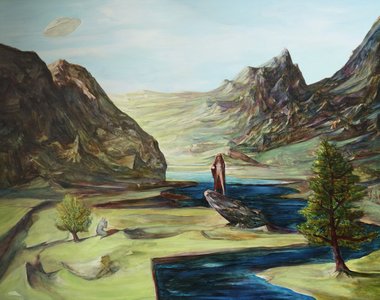
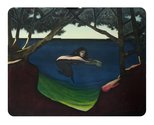

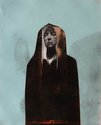

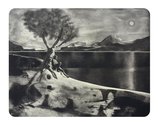
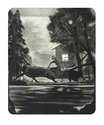



 Two Rooms presents a program of residencies and projects
Two Rooms presents a program of residencies and projects Advertising in this column
Advertising in this column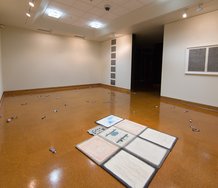
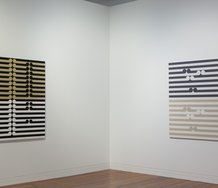
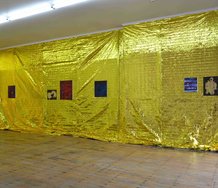
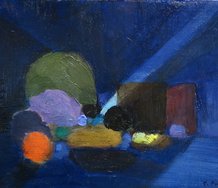
This Discussion has 1 comment.
Comment
Megan Dunn, 7:25 a.m. 17 April, 2018 #
LOVE Psychic Sea II! Good to see and read this piece and nice last line!
Participate
Register to Participate.
Sign in
Sign in to an existing account.